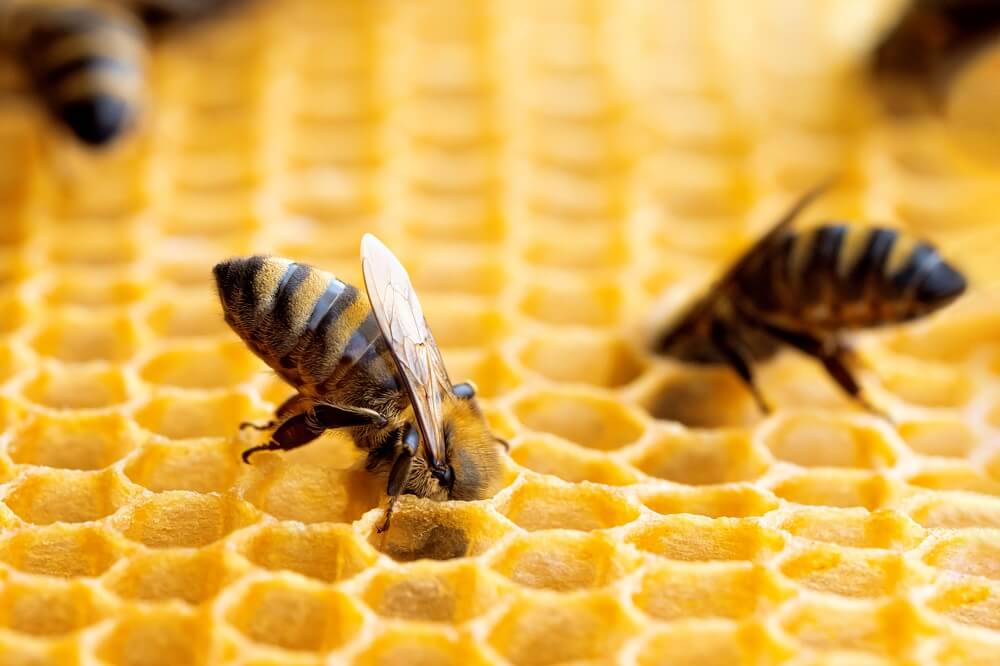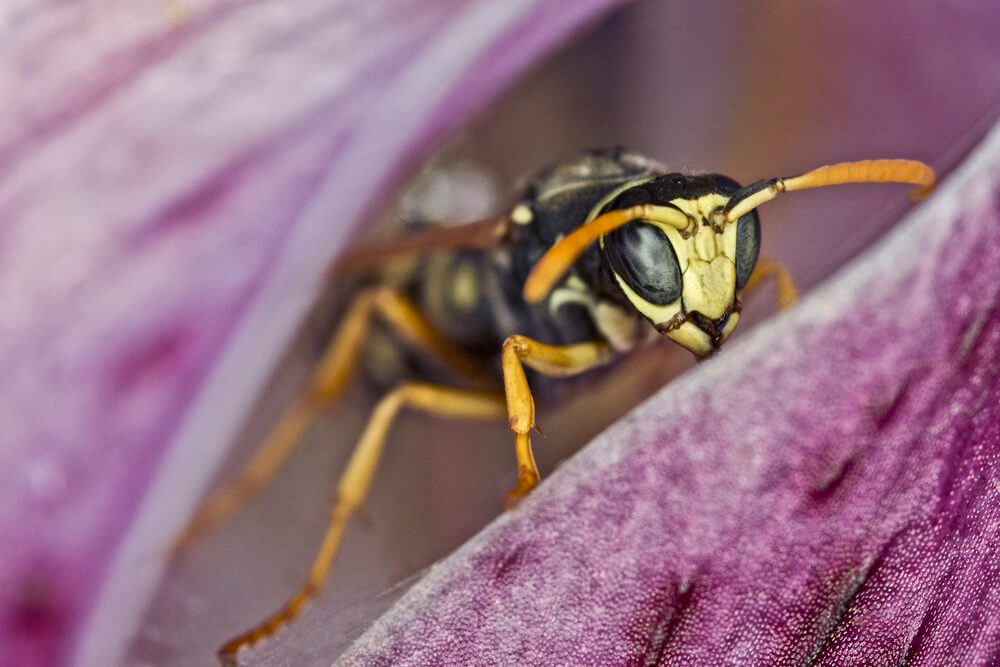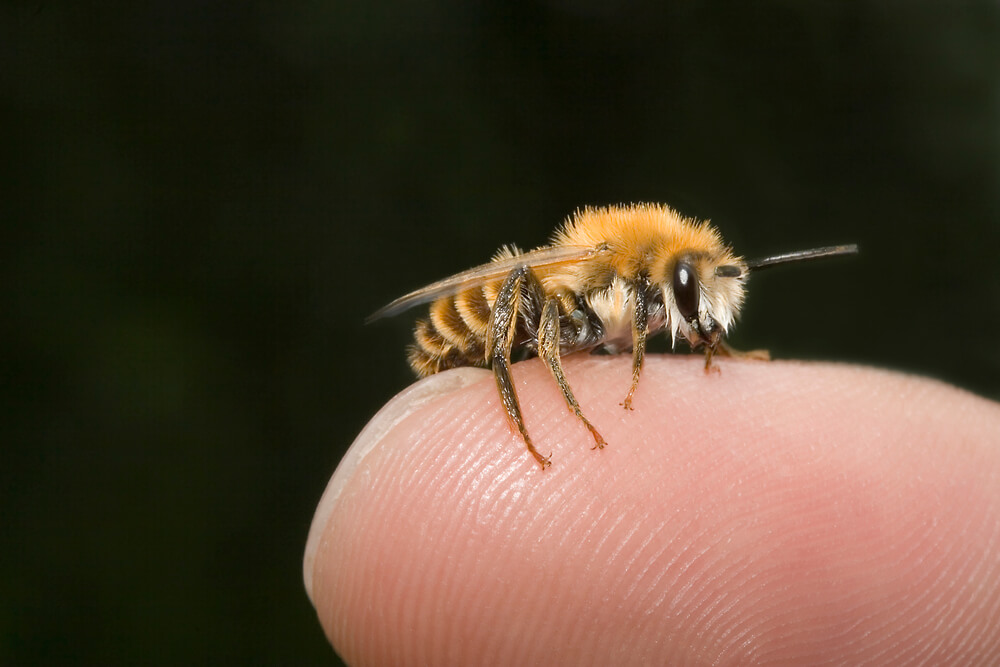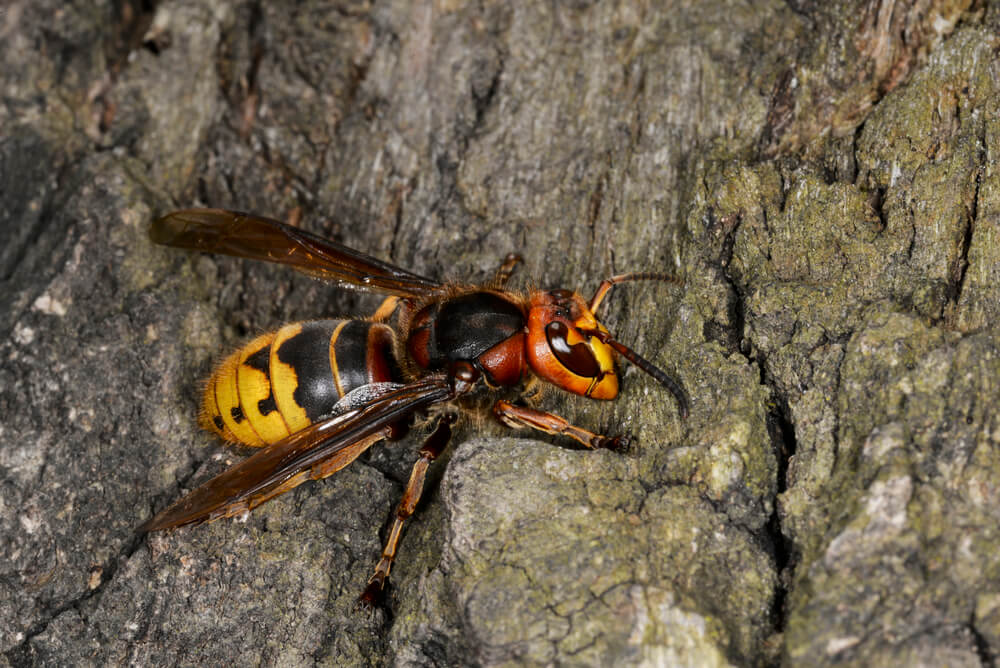Table of Contents:
Do All Bees Make Honey?

Let’s start with a surprising fact, shall we?
There are over 20,000 species of bees, and more than 90% of them don’t make honey.(1, 2)
In fact, the authentic honey you get at the grocery store only comes from one type of bee:
The honeybee.
Honeybees have earned their name because, well, you guessed it. They make tons of honey. A healthy honeybee colony can make 100 pounds of honey per year. This makes them the only bee species to produce enough honey for human consumption.
And the best part is:
There are more than 300 unique honey varieties. Examples include the delicious blueberry honey that comes from blueberry flowers and the popular clover honey from clover flowers.
But why do honeybees make so much honey?
Because they need something to eat during the winter when flowers aren’t blooming. Honey is their food storage for the cold months.
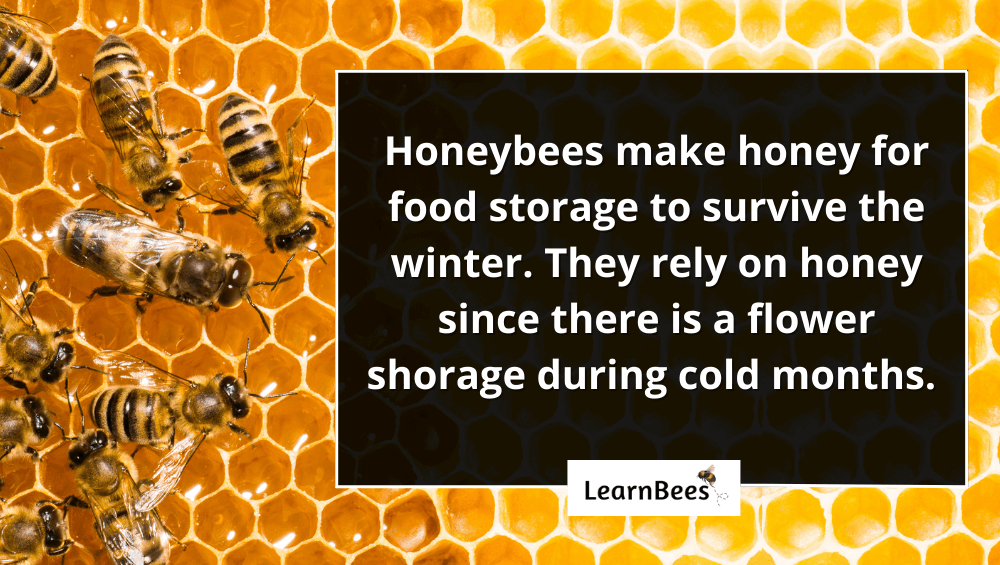
Consider this:
A bee’s primary diet consists of pollen and nectar from flowers. So when flowers are scarce during the winter, they need to supplement their diet so they don’t starve.
This is where honey comes in.
Honey is full of nutrients and high in sugar. It gives bees the energy needed to stay alive and keep their hive warm during the harsh winters. And since honeybees often make more honey than they need, beekeepers will harvest a portion of it and leave the rest for the bees.
Now here’s the million-dollar question:
What other types of bees make honey?
The answer? Not many.
Bees that make honey are social bees. Meaning, they live in hives consisting of a queen, worker bees, and drone bees.
For example, bumblebees are social bees that make honey. But unlike honeybees, bumblebees don’t use their honey to survive the winter. Instead, they use it when nectar sources are low. This happens when flowers wilt due to lack of rainfall or high summer temperatures.(3)

But make no mistake.
Bumblebees don’t make nearly as much honey as honeybees do. They typically make no more than a few tablespoons per hive.
Why?
Because bumblebees live in much smaller colonies of about 50-500 bumblebees. On the other hand, honeybees can have colonies as large as 60,000 bees.(4)
Plus, bumblebee colonies don’t survive the winter like honeybees do. Instead, only the queen bumblebee survives because she hibernates. And during hibernation, the queen bumblebee is neither eating nor working.
With that in mind, other social bees that make honey are:
- Australian Sugarbag Bees
- Melipona Bees
- Vulture bees
But remember:
There are more than 20,000 types of bees. Well-known species include honeybees, bumblebees, carpenter bees, and mason bees.
And due to the sheer amount of bee species, scientists haven’t studied them all. So we have tons of research on popular bees like honeybees and bumblebees, but much less research on sweat bees or vulture bees.
With that in mind, the question becomes:
What Type of Bee Doesn’t Make Honey?
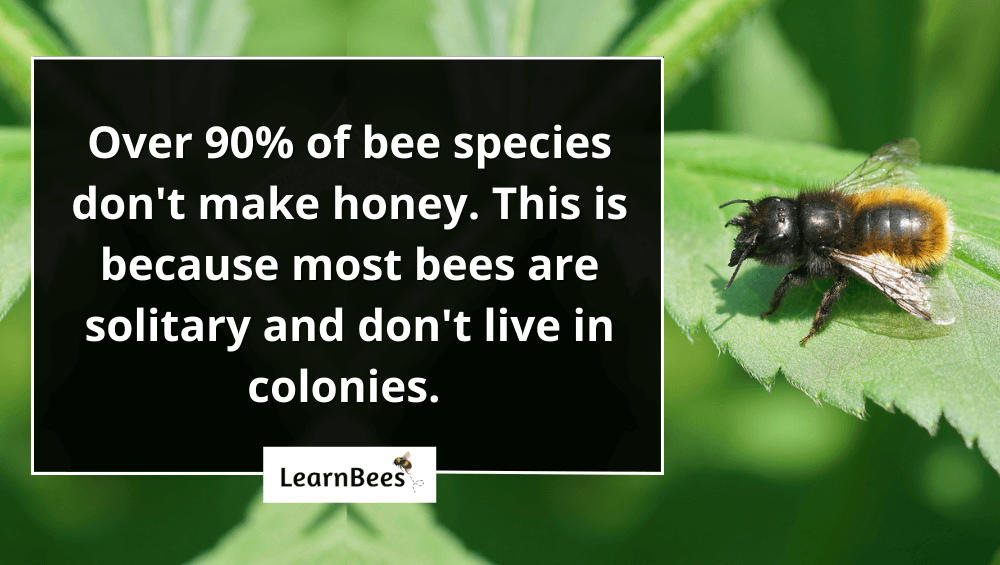
Confession time:
Over 90% of bee species don’t make honey.
This is because most bee species are solitary bees that don’t live in hives. Common examples of solitary bees are carpenter bees, mason bees, and sweat bees.
And let’s face it:
Making honey takes a lot of time and effort. A single honeybee only produces 1/12 of a teaspoon of honey in her lifetime.
So how do honeybee colonies make up to 100 pounds of honey per year?
Simple. They have a strong hive with up to 60,000 honeybees in it.
So to put it simply?
Solitary bees don’t have the extra hands needed to produce that amount of honey. They’re busy fending for themselves by building their own nests and gathering their own food.
Now let me bust a common myth:
Solitary bees aren’t simply bees who have left their colony and now live alone.
Solitary bees are born to be by themselves. They’re well-adapted at building and maintaining their own nests without help from other bees.
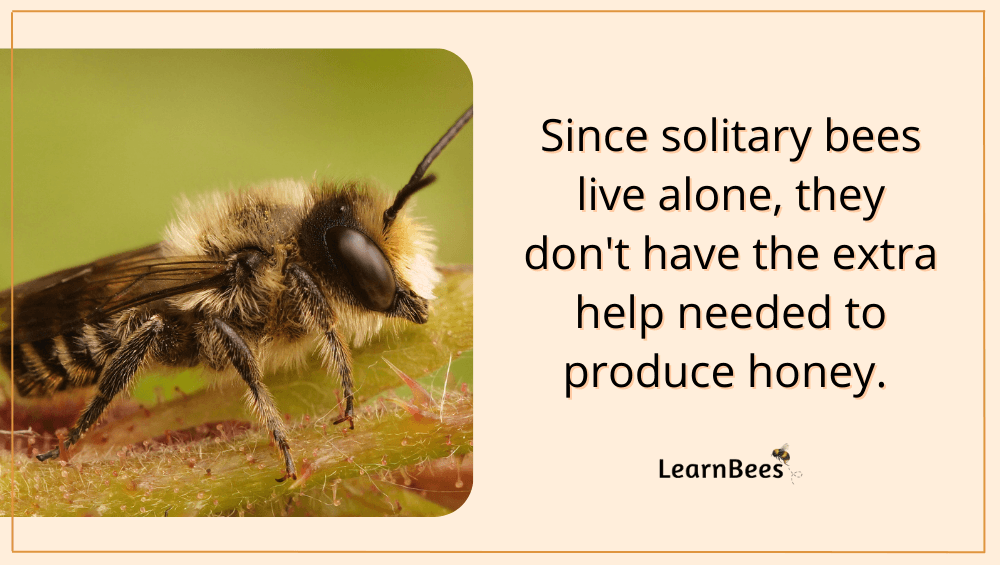
In contrast, honeybees work in large family units comprising of a queen, worker bees, and drone bees. The queen honeybee’s main job is to lay eggs while the worker bees do everything else. Worker bees job duties include gathering food, cleaning the comb, and defending the hive.
Solitary bees are completely different.
Take mason bees, for example.
Mason bees are solitary bees. This means that every female mason bee is technically a queen. She handles all the work for her nest, including laying eggs, gathering pollen and nectar, and collecting water. She’s also responsible for protecting herself.
And you know what?
Solitary bees are the unsung heroes of the pollinator world. While they don’t get as much attention as honeybees do, they’re actually incredible pollinators. For instance, only 250-300 mason bees are needed to pollinate an entire acre of fruit trees.
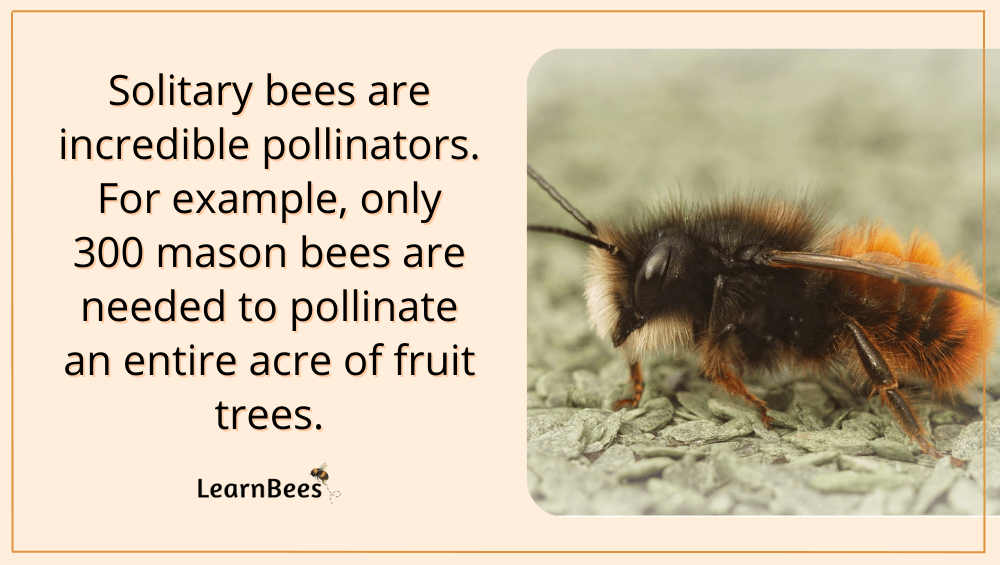
And to take it a step further:
It takes only 400 mason bees to do the pollination job of 40,000 honeybees. This is because honeybees have to visit a flower 7-10 times before it’s fully pollinated.(5)
But mason bees?
They can pollinate a flower in a single trip.
So what’s the bottom line?
All bees are crucial pollinators, regardless of whether they make honey. Each bee species has its own unique habits that we can learn to appreciate. As a result, we can thank species like bumblebees for buzz pollination and honeybees for honey.
Speaking of honey…
Can Humans Make Honey Without Bees?
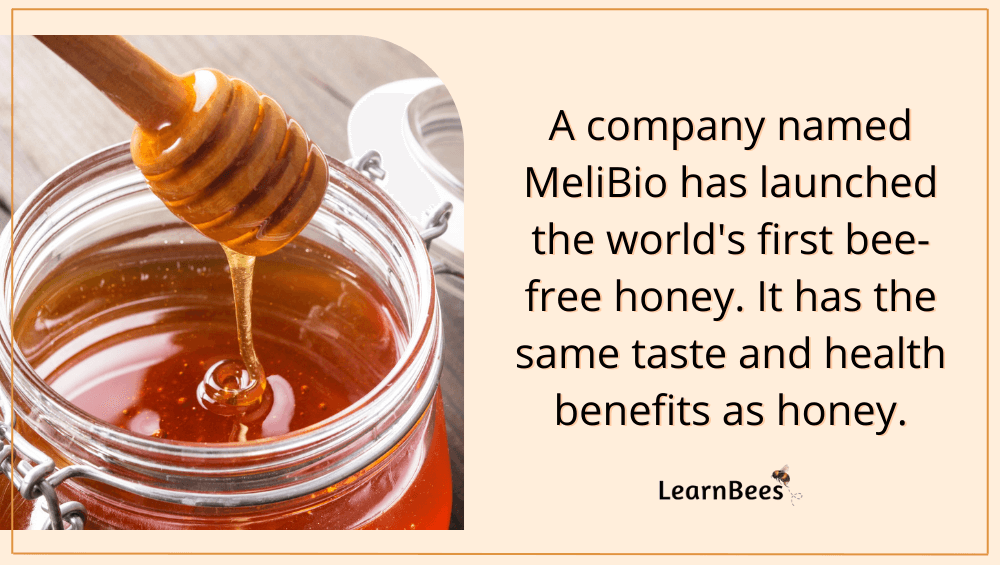
By definition, honey is a sweet, sticky fluid made by bees and other insects from the nectar of flowers. And according to that definition, real honey can only be made by insects.
However, humans can produce synthetic honey that provides the same taste and health benefits as authentic honey.
In 2021, a company called MeliBio launched the world’s first bee-free honey.(6, 7)
The company uses synthetic biology, precision fermentation, and plant science to make molecularly identical honey. This means it has the same health benefits and incredible taste of honey, but without the downsides linked to commercial honey production.
Why is this important?
Because despite what you’ve heard, honeybees aren’t declining. In fact, the opposite is true.
Manu Saunders, an entomologist, and professor at the University of New England, agrees with reports stating that the media has created a false bee apocalypse.
“As a species, the honeybee is not in danger of going extinct or suffering major declines,” she said. In fact, she added, “the number of honeybees in the world has been steadily increasing in the past few decades.”
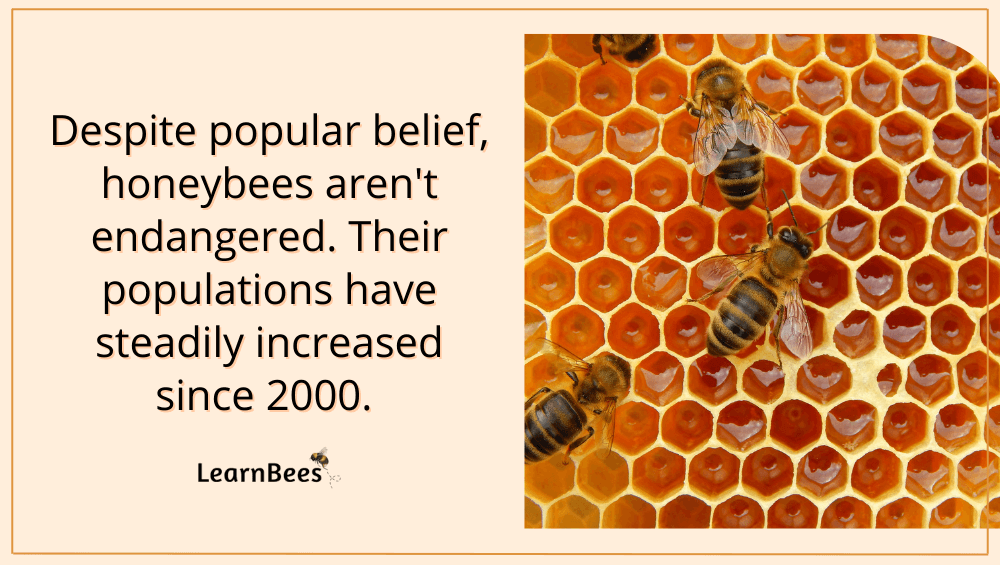
But don’t just take her word for it.
According to the Food and Agriculture Organization of the United Nations, honeybee populations have increased by 30% since 2000. Honeybee populations even hit a 20-year high in 2014.
Not only are honeybees not endangered, but they might also be responsible for the decline of other bee species.
You see, European honeybees aren’t native to North America. They were first brought here in the 1600s so people could harvest their honey and beeswax. Since then, beekeeping has become a huge commercial operation.
The honey industry is valued at over eight billion dollars.(8)
So what’s the problem?
The presence of so many honeybees in North America means they’re out-competing other bees and insects for pollen and nectar. As such, native bee species like bumblebees are in serious decline.(9)
Saunders says, “Increasing numbers of honeybees may be depleting resources that wild insects need, spreading parasites and diseases to wild insects.”

“These colonies pull a huge amount of floral resources, like nectar and pollen, out of the wildlands,” added Stephen Buchmann, a pollination ecologist specializing in bees. “This takes food out of the mouths of native bees and other pollinators.”
Now don’t get me wrong:
It isn’t the European honeybee’s fault that they were brought to North America. Honeybees are an incredible bee species that are fascinating to observe. The issue is that we don’t want one species to thrive at the expense of many others.
So MeliBio is on a mission to create bee-free honey that can help restore native bee populations, like the American bumblebee.
“MeliBio is founded with the mission to make food in a way to save our planet Earth by ending our use of bees in honey production, and thereby helping to restore bee biodiversity amongst native and wild bees worldwide,” said Darko Mandich, CEO of MeliBio.
Mandich added, “By bringing delicious, nutritious, and real honey made without bees to the market, we are shaping our present and future in a way that is better for bees and for humans.”
FAQs on “Do All Bees Make Honey?”
- Do all beehives produce honey?
- Do bumblebees make honey like honey bees?
- Do any insects other than bees make honey?
- Do male bees make honey?
- Why don’t all bees make honey?
- Do bees make honey all year round?
- Do all bees make honeycombs?
- What do bees do with all the honey they make?
Do all beehives produce honey?
Honeybee hives produce honey. They use it as food storage to survive the winter. But only a small percentage of bee species makes honey.
For example, bumblebees are an example of a bee species that makes a small amount of honey. That said, a bumblebee colony only produces a few tablespoons of honey while a honeybee colony can produce up to 100 pounds per year.
Keep in mind:
Bees that produce honey are social bees that live in colonies. This means they have hundreds, or even thousands, of other bees to help them make honey.
On the other hand, solitary bees live alone and don’t make honey. They simply don’t have the extra help necessary to produce honey. Since solitary bees make up the majority of bees species, this means that most types of bees don’t make honey.
Examples of solitary bees include:
- Carpenter bees
- Sweat bees
- Mason bees
- Digger bees
—> Go back to the FAQs on “Do All Bees Make Honey?”
More to Explore:
Do bumblebees make honey like honey bees?
We often get asked this, along with other questions like:
Do black bees make honey? How many species of bees make honey? Do killer bees make honey? Do all kinds of bees make honey?
Bumblebees do make honey. You can read our guide: Do Bumble Bees Make Honey? for more information.
As mentioned, there are a small number of bees who actually do make honey. This includes European honeybees, Africanized honeybees (nicknamed killer bees), and Australian sugar bag bees.
—> Go back to the FAQs on “Do All Bees Make Honey?”
More to Explore:
Do any insects other than bees make honey?
Yes. For example, some species of ants and wasps make honey. The “honeypot ant” is a common name for an ant species that stores honey in its abdomen.
Also, the Mexican honey wasp is an example of a wasp species that produces honey.
—> Go back to the FAQs on “Do All Bees Make Honey?”
More to Explore:
Do male bees make honey?
No, you might be surprised to learn that most male bees only have one job:
To mate with females.
In turn, male bees tend to have much shorter lives than queen or female worker bees. Female worker bees are the bees responsible for making honey and doing the majority of the other work for the hive. They gather food and water and tend to their queen so she can lay eggs daily.
—> Go back to the FAQs on “Do All Bees Make Honey?”
More to Explore:
- Do Carpenter Bees Pollinate?
- How Long Do Bumble Bees Live?
- Honeybees vs. Bumblebees: How Do They Compare?
Why don’t all bees make honey? What do bees that don’t make honey do?
All bees don’t make honey because they simply don’t need to.
For honeybees, honey is used as food storage to help them survive the winter. Honeybees are an exception since most bees are solitary bees that don’t survive the winter.
—> Go back to the FAQs on “Do All Bees Make Honey?”
More to Explore:
Do bees make honey all year round?
It depends on the climate.
For instance, in colder states like North Dakota, no. The honeybees will huddle together inside their hive during the winter. They rely on their honey for food, and they don’t leave the hive – except to use the bathroom. Huddling together is what keeps them warm so they can survive.
But in warm climates like Australia, honeybees can be active all year round, making honey and gathering food.
—> Go back to the FAQs on “Do All Bees Make Honey?”
More to Explore:
- Ground Bees: Are They a Threat to Your Yard?
- Wasps vs. Honeybees: Are They Different?
- Do Bumble Bees Bite?
Do all bees make honeycombs?
No. Honeycombs are solely made by honeybees to store their honey. Even other bee species that produce honey – like bumblebees – don’t make honeycombs like honeybees do.
—> Go back to the FAQs on “Do All Bees Make Honey?”
More to Explore:
What do bees do with all the honey they make? Do bees need all the honey they make?
They eat it! During nectar shortage, the bees will rely on the honey, so they don’t starve. Honeybees usually make more honey than they need, so skilled beekeepers will harvest a portion of it while leaving the rest behind.
